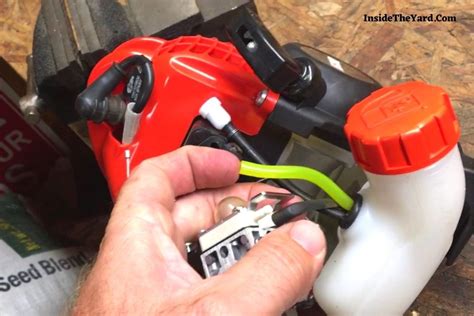Echo SRM 225 Carburetor: Your Complete Adjustment Guide
The Echo SRM 225 string trimmer is a popular choice for homeowners and landscaping professionals alike, known for its power and reliability. However, like any small engine, the SRM 225's performance hinges heavily on proper carburetor adjustment. A poorly tuned carburetor can lead to poor starting, inconsistent running, reduced power, and excessive fuel consumption. This comprehensive guide will walk you through adjusting your Echo SRM 225 carburetor, ensuring optimal performance. We'll cover everything from identifying the carburetor components to troubleshooting common issues.
Understanding Your Echo SRM 225 Carburetor
Before diving into adjustments, it's crucial to understand the basic components and their functions. The SRM 225 carburetor uses a diaphragm-type design, featuring several key adjustment screws:
- High-Speed Needle (H): Controls the fuel mixture at high engine speeds.
- Low-Speed Needle (L): Controls the fuel mixture at low engine speeds and idle.
- Idle Speed Screw (I): Controls the engine's speed when idling.
These screws are typically located on the side of the carburetor and are usually identified by "H," "L," and "I" markings, or by their corresponding functions (High, Low, Idle). It’s extremely important to note their starting positions before making any adjustments; this helps you return to the original settings if needed. Many users recommend taking photos before beginning any adjustment to aid in recalling the initial state.
How to Adjust Your Echo SRM 225 Carburetor
Caution: Always refer to your owner's manual for specific instructions and safety precautions. Working with small engines involves potential hazards; proceed with caution and wear appropriate safety gear.
1. Preparing for Adjustment
Before attempting any carburetor adjustments, ensure the following:
- Fresh Fuel: Use fresh, high-quality fuel mixed according to the manufacturer's specifications. Old or improperly mixed fuel can significantly impact performance.
- Clean Air Filter: A clogged air filter restricts airflow, leading to poor running. Clean or replace the air filter before proceeding.
- Warm Engine: Allow the engine to warm up for a few minutes to ensure consistent performance during adjustment.
2. Adjusting the High-Speed Needle (H)
With the engine running at full throttle, carefully turn the high-speed needle (H) screw. Small adjustments (1/8th of a turn at a time) will yield noticeable changes. Listen for changes in engine tone and observe the engine's power output. The optimal setting will be the point where the engine runs smoothly and powerfully with a clean exhaust note. Excessive smoke usually indicates too much fuel, while sputtering indicates too little.
3. Adjusting the Low-Speed Needle (L)
Reduce the engine speed to a mid-range setting. Carefully adjust the low-speed needle (L) screw using the same incremental adjustments as the high-speed needle. The goal is to achieve a smooth, steady running engine with no hesitation or stalling. Again, listen closely to the engine and observe its behavior. Excessive smoke or sputtering indicates the need for fine-tuning.
4. Adjusting the Idle Speed Screw (I)
Once the high and low-speed needles are properly adjusted, focus on the idle speed. With the throttle in the idle position, adjust the idle speed screw (I) to set the engine speed to a consistent, steady idle without stalling. This screw primarily controls the idle speed and does not directly influence the fuel mixture.
Troubleshooting Common Carburetor Issues
Engine Won't Start:
- Check for spark: Ensure the spark plug is functioning correctly.
- Fuel supply: Verify fuel is reaching the carburetor and that the fuel line is not clogged.
- Air filter: Make sure the air filter is clean.
- Flooded engine: If the engine is flooded, allow it to air out for a few minutes.
Engine Runs Poorly:
- Fuel mixture: Adjust the high and low-speed needles as described above.
- Clogged carburetor: Consider a professional carburetor cleaning if adjustments don't resolve the issue.
- Dirty air filter: Replace the air filter with a new one.
Engine Stalls Frequently:
- Idle speed: Adjust the idle speed screw to achieve a steady idle without stalling.
- Low-speed mixture: Adjust the low-speed needle for optimal performance at low speeds.
When to Seek Professional Help
While adjusting the carburetor yourself can save time and money, some issues may require professional assistance. If you've tried adjusting the carburetor and are still experiencing problems, it's best to consult a qualified small engine repair technician.
This guide provides a comprehensive overview of adjusting the carburetor on your Echo SRM 225 string trimmer. Remember to always prioritize safety and consult your owner's manual for specific instructions and warnings. With careful attention to detail and patience, you can achieve optimal performance from your Echo SRM 225.

